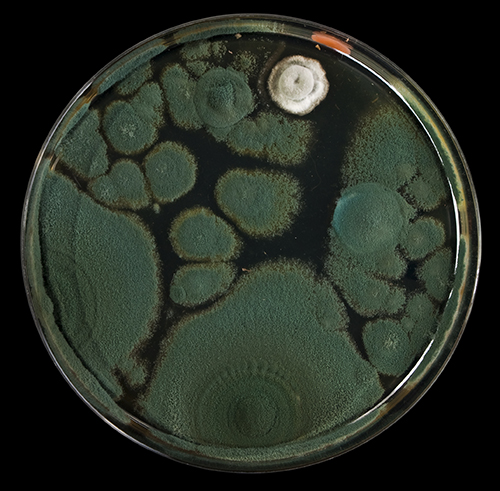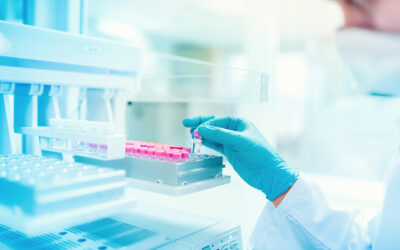When growing microorganisms, several conditions must be considered to ensure successful results including correct temperatures and pH, adequate moisture and sufficient nutrients (carbon and nitrogen).
Even experienced microbiologists can run into growth issues with finicky microorganisms. With this in mind, we have created a new series of blog posts that will highlight a variety of tried and true growth methods for creating an environment best suited for reproduction of various microorganism species.
Method for Yeasts and Molds:
Agar: Although many selective agars exist for the cultivation and determination of mold and yeast cultures, a majority of them do not depend on strict nutritive requirements for growth. Many fungal strains will grow on Sabouraud Dextrose Emmons Agar. Alternative agars for growth include Sheep Blood Agar, Nutrient Agar, Tryptic Soy Agar (Soybean Casein Digest), Potato Dextrose Agar, and Standard Methods Agar (Plate Count Agar) with an additional 24 hours of incubation.
Temperature: 25°C
Atmosphere: Aerobic
Growth Time: 2 to 7 days
The following are microorganisms that can grow using this culture method:
| Alternaria sp. | Paecilomyces sp |
| Aspgergillus sp. 1 | Penicillium sp. |
| Aureobasidium sp. | Prototheca sp. |
| Chaetomium sp. | Rhizopus sp. |
| Candida sp. | Rodotorula sp. |
| Cladosporium sp. | Saccharomyces sp.4 |
| Cryptococcus sp. 2 | Sporidobolus sp. |
| Fusarisum sp. | Streptomyces sp. |
| Geotrichum sp. | Trichoderma sp. |
| Issatchenkia sp. | Trichosporon sp.5 |
| Kloeckera sp. | Wallemia sebi |
| Microsporum sp.3 | Zygosaccharomyces sp.6 |
| Mucor racemosus |
The strains listed below have slightly altered preferences or requirements for growth:
- Aspgerillus flavus – Does not grow well on Standard Methods Agar.
- Cryptococcus sp. – Must be incubated at 25°C to assure growth! C.gattii grows best on Malt Extract Agar or Sabouraud Dextrose Agar. Non-selective Sheep Blood agar is not a good alternative media for Cryptococcus sp.
- Microsporum canis – Grows poorly on Sabouraud Dextrose Agar.
- Saccharomyces sp. – Sabouraud Dextrose Emmons Agar is the best medium for growth.
- Trichophyton sp. – Incubate 7-14 days.
- Zygosaccharomyces bailii – Does not grow well on non-selective Sheep Blood Agar, Nutrient Agar, or Tryptic Soy Agar. Use Sabouraud dextrose Agar for best results.
Check out our Recommended Growth Requirements for detailed descriptions of all our growth methods.






Will tryptic soy agar grow all types of bacteria?
Hello John –
No, not all bacteria will grow on TSA. There are some strains that have specific nutritional requirements that TSA cannot provide. Our Recommended Growth Requirements for Microorganisms document found on our website may be useful to you: http://www.microbiologics.com/Growth-Requirements
Which agar is best for environmental fungi, for example Stachyborys sp? Is it true some environmental spores do not grow on sabs? If so which is the best for passive settle plate isolation? Thank you.
Carol – We do not carry any Stachybotrys strains, so we cannot confirm the growth requirements. Although, ATCC uses media selections of cornmeal, yeast, glucose agar (CMYG), cornmeal agar, Potato Dextrose agar, or Emmons’ modification Sabouraud’s agar around 25°C to facilitate their strains. The customer’s regulatory agency should provide the requested information on which plates are recommended for passive settle plate isolation.
Hey there! How would you actually grow mold on the agar? I know to grow bacteria you would swipe basically anything and proceed to rub it on the agar, and it will grow. Does it work the same way for mold? If so, how would I find mold to swipe and rub in on the agar? This is for a science project and I’m afraid I don’t have any mold growing in my home to swipe! Will mold automatically grow on the agar once it is set and or bought? Lmk asap! Thx! – Julie
Julie – You could try growing some mold on food in the fridge or leaving some produce on the counter for a few days. The EPA mold guide may be a helpful resource for sourcing mold: https://www.epa.gov/mold/printable-version-brief-guide-mold-moisture-and-your-home
Hope this helps!
Will R2A agar grow all types of bacteria? Can I use R2A for food testing instead of TSA ?
Kitty – R2A is not recommended for all microorganisms. Our Recommended Culture Methods document can help you determine the correct media for the microorganisms you are growing. You can view the document here: http://bit.ly/2kuDVxn.
I have a sample to be analyzed on potato dextrose agar using pour plate method but beforw i pour the agar i change the pH of the potato dextrose agar to pH 3.50 using tartaric acid……. but in many instances i found out that there are growth of molds and yeast ive done many confirmation and still found out that it has growth….. Is my method correct?
Fred – Agars with a low pH will still support growth of certain microorganisms called Acidophiles. Molds and yeasts grow in a wider pH range, but typically most bacteria prefer a neutral pH.
Is it possible for molds to grow on TSB but keep the TSB clear? I have encountered TSB that is clear and looks negative but has tiny jellyfish-like particulates in it that looks like a mold.
Riva – When growing mold in TSB, you will not see the same type of turbidity you would if growing bacteria in TSB. In TSB, mold cultures tend to exhibit flocculent growth in the early stages B (these are the jelly-fish like particulates) and may also form a pellicle at the top of the TSB. These particulates are the hyphae of the mold culture.
For active air sampling of mold what would be the best agar to use?
Rusty – You should check with your regulatory agency to be sure you are using the correct agar. We did some research and the information we found indicates the following:
– The EPA recommends Sabouraud Dextrose Agar (SDA).
– USP Chapter <797> recommends Malt Extract Agar (MEA).
– And finally, the following information can be found on the website of a company known as “Mold & Bacteria Consulting Services (MBS). Here is a link: MBS
“It’s important to select media for mold sampling wisely. If one decides to collect viable air samples, the choice of media to use is very important. Generally, malt extract agar (MEA) is used. It is a ‘broad spectrum’ medium that supports the growth of a wide range of fungal species. However, antibiotics may have to be incorporated to suppress bacteria growth. Its main disadvantage is that fast growing molds tend to overgrow slow growers making it difficult to count colonies. To overcome this problem, DG18 and Rose Bengal can be used. These media have compounds added to them to slow down fast growing fungi and inhibit bacterial growth. If one is sampling a relatively dry environment, MEA+40{21568500cbbe79274f48cf710db15c141839bb6fa05d0e4f823963bc4a710758} sucrose would be recommended for detecting xerophilic (dry loving) fungi.”
If you have any other questions, please feel free to reach out to our Technical Support team at techsupport@microbiologics.com
are there specific media for mold?
There are a variety of medias that can be used for mold. We typically use non-selective media, such as Sabouraud Dextrose Agar, to resuscitate mold strains in our lab. You can find the growth requirements for all of our strains here: https://www.microbiologics.com/Recommended-Culture-Methods. Please reach out to our Technical Support team at techsupport@microbiologics.com or 1.320.229.7045 with questions.
Can you tell me what agar is used to grow Lichtheimia corymbifera or Lichtheimia sp generally? And what don’t they grow well in? Thank you.
I probably don’t belong in this forum as one whose business is dedicated to the production of fermented, mold ripened sausages. I inoculate the surface of these sausages (pork intestine or cotton fibrous casing) with Penicillium Nalgiovenense and Penicillium candidum. I have been having difficulty getting even distribution of the culture across the length and diameter of the product notwithstanding careful control of humidity (86{21568500cbbe79274f48cf710db15c141839bb6fa05d0e4f823963bc4a710758}) and temperature 21-23C. The cultures tend to colonialize rather than cover. I am wondering if adding a small amount of dextrose to the water in which the lypholized cultures are rehydrated might help. thanks for any advice. Paul
Thank you for your inquiry! Our Technical Experts do not have experience with inoculating sausage casing with the molds below but we will do our best to suggest a few things! It does sound like something in the casing or sausage themselves, is inhibiting growth causing the colonization effect. Are you able to incubate the inoculate sausage longer to give them a chance to overcome the inhibitory compounds? You could also look into resuscitating the cultures on an agar plate first, and then creating a suspension from fresh growth to inoculate the sausage.
Hi! I was hoping for some tips. We are having a product that is going mouldy over the course of the shlef life. However there is never mould present at the start of the shelf life.
I had been considering that maybe it was mould spores that were not being caught in the initial test. What method is a surefire way to make sure we recover all mould/spores present?
I have aspergillus niger that I am using for a study against disinfectants. I’m growing control counts on Potato Dextrose agar. I grew a liquid sample of the mold in SD broth in a shaker incubator for 48 hours, and plated that up to -8. What is the best time that the control plates should be in the incubator, so I can get the best representative count for my initial titer? It says 2-7 days, but I’d love to know if there was a target number of hours.
Hi Rachel! Because each microorganism has a different doubling time that is highly dependent on growth conditions, I would recommend estimating your initial titre by measuring the turbidity of a fresh suspension. One way to do this is with a McFarland standard, I recommend using a 3.0 McFarland to estimate about 1.0E+08 Cells/ml.
Hello. I would like to ask:
Can yeast growth in the medium (say DG-18 agar) change the agar pH?
I have experienced a plate with tntc on yeasts and checked its pH which was at 8.4, but the pH
of the DG-18 agar was 5.6 as per manufacturer. Does yeast growth have an effect on agar pH?
Thanks!
Yes, growing bacterial and yeast cultures can change the pH of the culture media they are on due to many different mechanisms. These include, but are not limited to, fermentation, secretion of acids, and utilization of the agar components. It is important to test the pH of media prior to inoculating it with the microorganism.